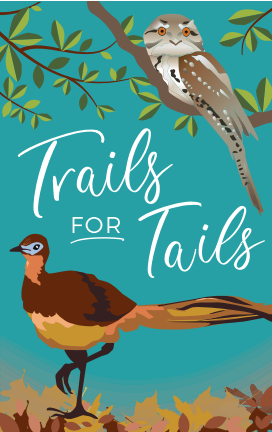Trails for Tails
Feral Animal Control Program
An extension to our original Trails for Tails project aiming to save the Albert's Lyrebird.
Fox, cat and wild dogs are widespread throughout north eastern NSW. Cats in particular are responsible for killing between 100 million and 1.5 billion birds each year (Bush Heritage Australia, 2020). Both cats and foxes have contributed to Australian mammal extinctions. When compounded by inappropriate fire regimes, pest animals pose a major threat to all native animals. They have considerable impacts on the recovery of threatened species and are a key threat to the survival of Albert’s Lyrebird (Menura alberti).
The total population of Albert's Lyrebird is estimated at 3500 breeding birds and is likely to be declining based on documented data (Garnett & Crowley 2000). Occurring in 10 sub-populations across Tweed, Mcpherson and Richmond Ranges, they’re limited to rainforest and wet sclerophyll forest types. Inappropriate fire regimes, clearing of rainforest, isolation, climate change and predation by pest animals are known to have considerable effects on population survival. The greatest population density of Albert’s Lyrebird is recorded at Whian Whian State Conservation Area (Garnett & Crowley 2000) which fell victim to the Mt Nardi fire in November 2019.
Encouraged by strong winds and prolonged drought conditions, the fire managed to burn 6500ha across Nightcap, Mt Jerusalem, Whian Whian and private adjoining properties. Areas affected include World Heritage listed subtropical rainforest remnants. After the 2019-20 ‘Black Summer’ bushfire events, Albert’s Lyrebird is more susceptible to predation by pest animals than ever before.
